
We kindly inform you that, as long as the subject affiliation of our 300.000+ articles is in progress, you might get unsufficient or no results on your third level or second level search. In this case, please broaden your search criteria.



Church Slavonic manuscript collections in Poland hold over forty copies of homilies and encomia traditionally attributed to Clement of Ohrid. Although scholars have known about these copies for years, they have not been subjected yet to detailed linguistic and textual studies. The analysis of the works from the Lenten and Paschal cycles reveals that part of the copies retain old linguistic features – spelling and lexical units – from South Slavonic manuscripts which, no doubt, were still in use in areas of Western Russia during the 14th–16th centuries. As a rule, Clement’s works were faithfully copied, but there are occasionally examples of textual interventions that evince editorial activity by local scribes and compilers. The source material confirms the opinion that, within the Polish-Lithuanian state, Russian Orthodoxy was actively drawing from the South Slavonic literary tradition.
More...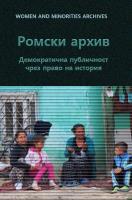
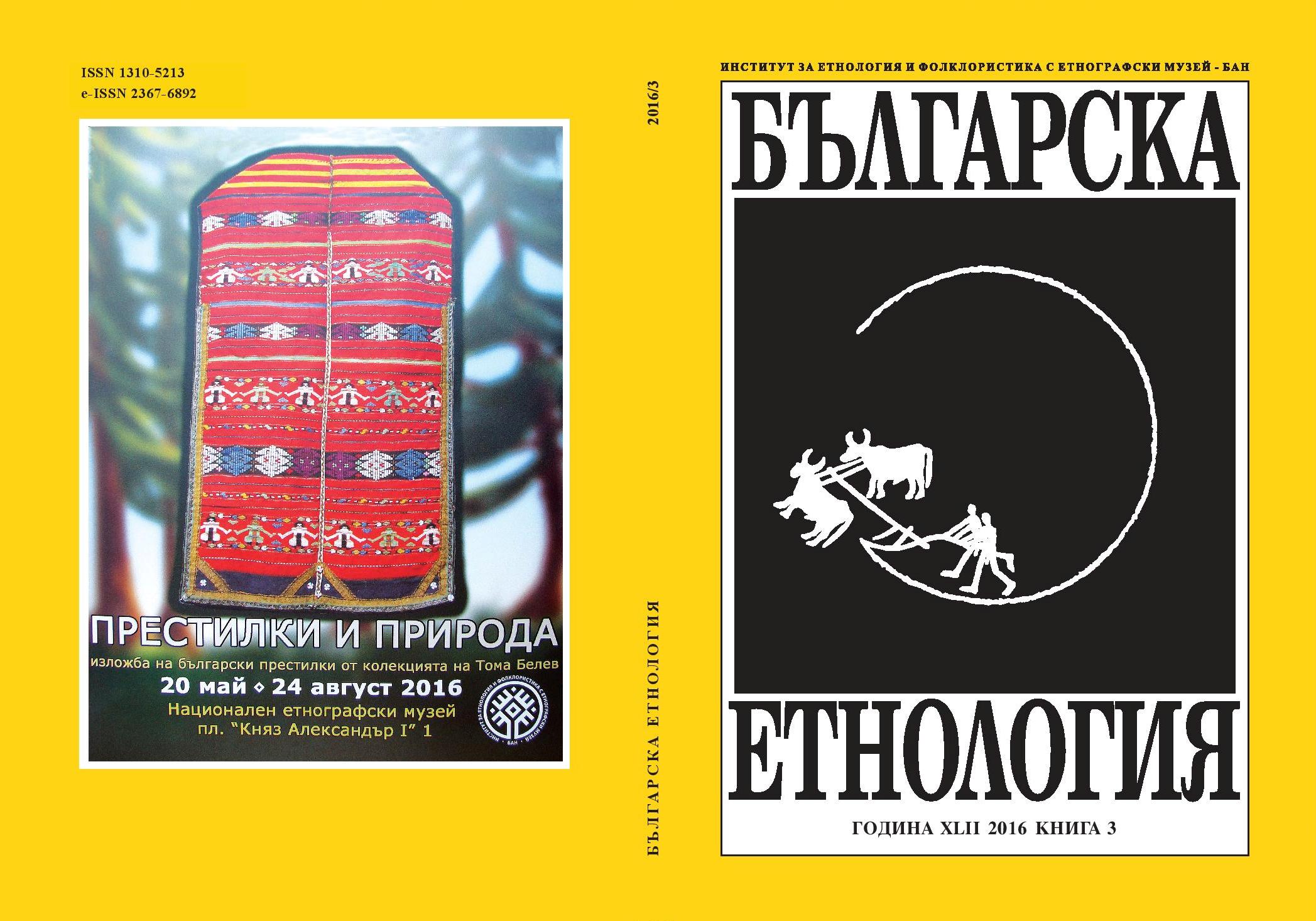
The article presents in chronological order the donations which have come in thespecialized ethnographic archive of the Institute of Ethnology and Folklore Studieswith Ethnographic Museum. It analyzes the dynamics of the donations, their thematiccontent, territorial range, and the motivation of the donors as well as traces the processof transformation of the personal documents into public socially significant culturalfacts.
More...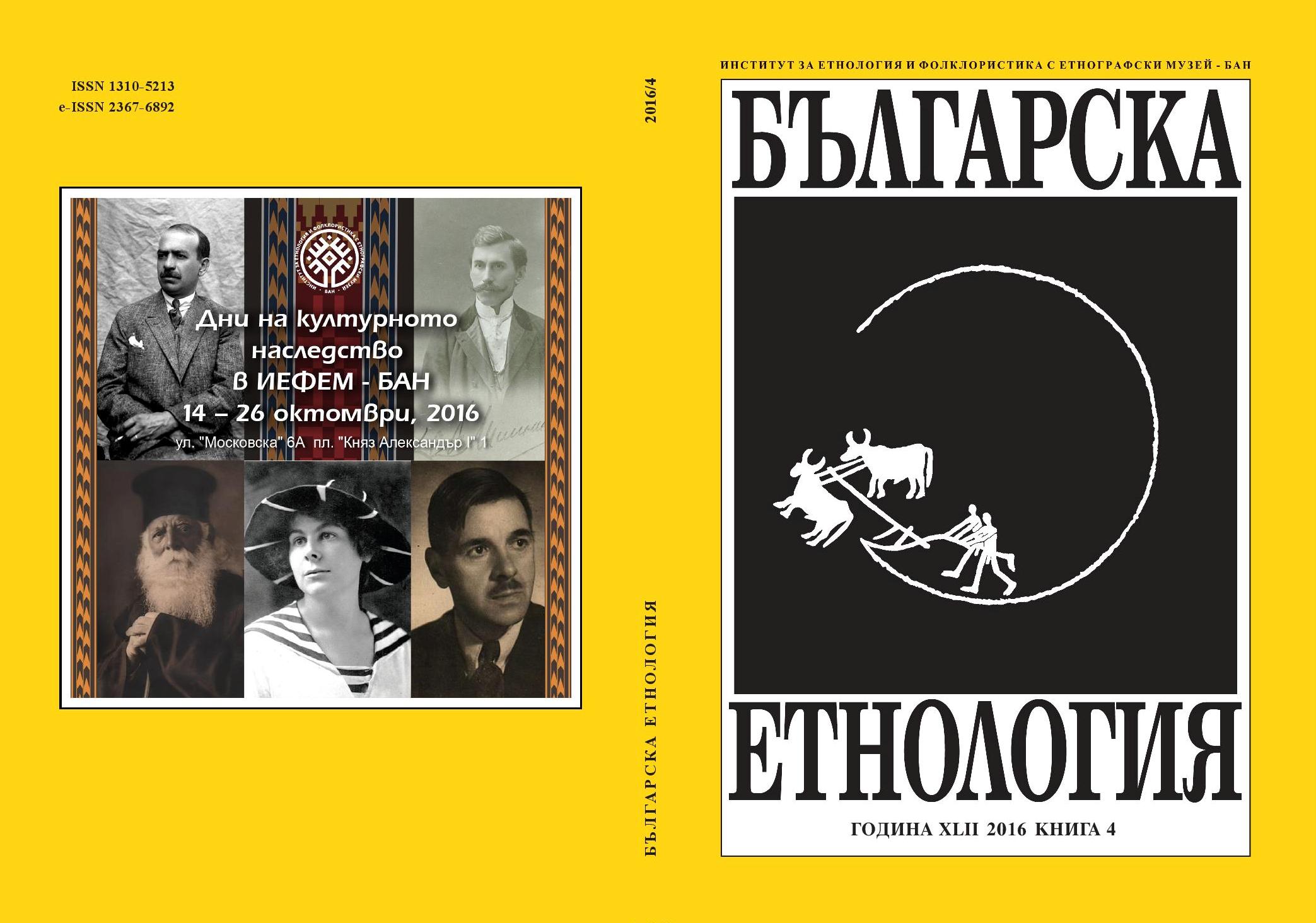
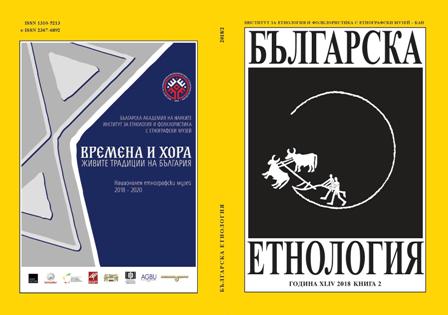

During the last twenty years, Central and Eastern European Online Library (CEEOL) became a leading database and repository offering a highly specialized and comprehensive collection of full text indexed documents in the fields of Humanities and Social Science publications from and about Central and Eastern Europe. Journal articles, eBooks and Grey Literature items are included in 50+ languages, allowing access to the primary source in one repository and fostering the language diversity in academic research and publishing. The dissemination process of the content in CEEOL includes the following discovery systems: Google Scholar, ProQuest´s Serial Solutions, Summon, Primo Central, Alma, EBSCO´s EDS Discovery Service and Knowledge Base, TDNet and OCLC. The CEEOL´s partnership with Clarivate Analytics allows Web of Science editors having access to the CEEOL platform for easier analysis, selection and indexing of CEEOL journals that interest the Web of Science community. Institutional subscribers (states’, universities’, institutes’ libraries, etc.) worldwide appreciate CEEOL for providing researchers, scholars, students, librarians and library patrons the access to indexed and archived Journals, eBooks and Grey Literature documents from and about Central and Eastern Europe by leading academic and scholarly publishers. The Bulgarian collection of journals and books holds a special place in CEEOL due to the high quality of scientific content and the depth and the completeness of the digital archives of the Bulgarian periodicals. CEEOL is a unique source of information for the development of Bulgarian humanities and social sciences for the past over 30 years, and that source could be used more widely in Bulgaria for supporting this development in the future. The study uses a comparative approach and analyzes the results of some of the business analytics tools of the CEEOL system.
More...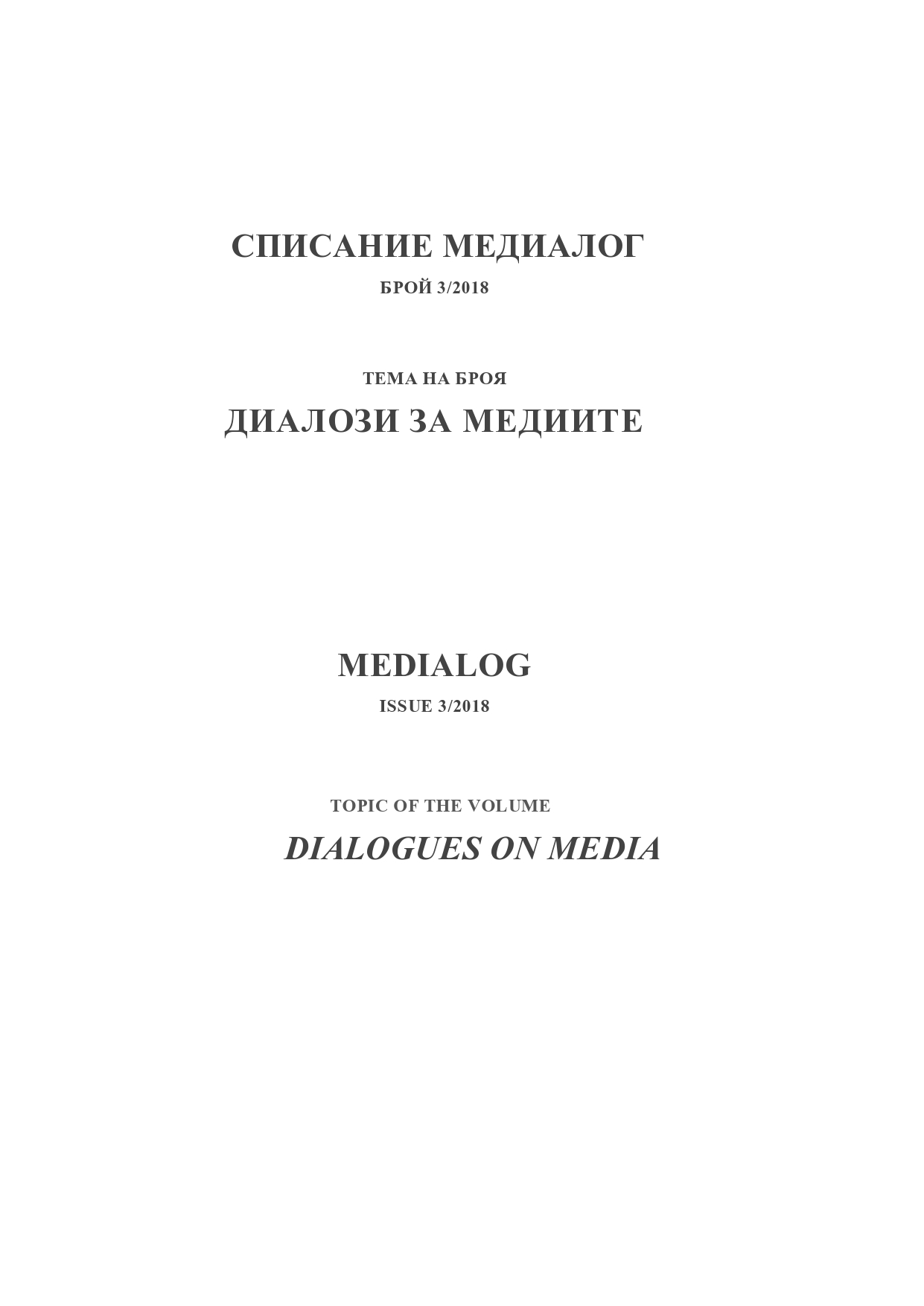
The text presents Bulgarian language web radio based on research in 2014 and 2017. It touches on highlights of its development after the first web radios appeared at the beginning of the new century. The article studies the changes in practices of listening portals. It compares data on web radio stations: number, distribution by format and address. It identifies trends: development of music web radios toward alternative group offers, sustainability of radios of idea-based communities, establishment of the 'marketing' radio, emergence of web radio community initiatives.
More...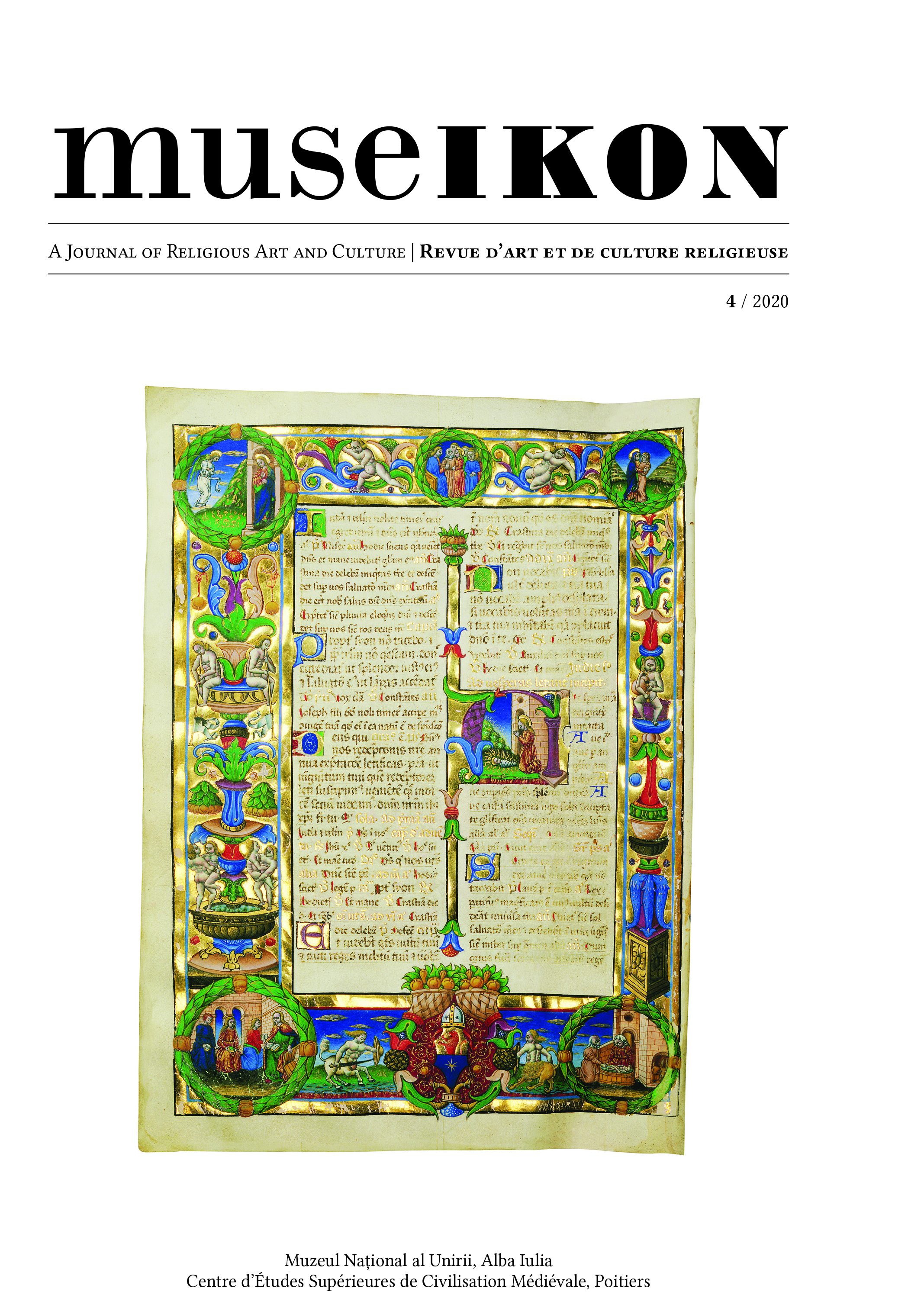
Le manuscrit conservé à la Bibliothèque de l’Académie Roumaine de Bucarest sous la cote Ms. rom. 1790 n’est pas comme les autres. La page du titre l’indique elle-même : on a affaire à un Sluzhebnik contenant les li- turgies des saints Jean Chrysostome et Basile le Grand, y compris quelques « autres offices d’hiérarques ». Com- mandité par le métropolite Ștefan de Hongrovalachie († 1668), achevé avec sa bénédiction à une date qui reste encore difficile à préciser, cet Ἀρχιερατικόν, destiné à l’usage exclusif des hauts prélats, est décoré de nombreuses miniatures et contient des textes en trois langues : les textes liturgiques sont en slavon ; les ecphonèses, c’est-à- dire les parties finales des ecténies à lire à voix haute, sont en grec, mais en caractères cyrilliques et souvent en transcription phonétique ; alors que la plupart des indications de régie à l’attention de l’officiant et presque tout le « Règlement pour l’ordination du métropolite et de l’évêque » sont en roumain. En partant du témoignage d’un voyageur russe en Moldavie et en Valachie, de l’Ekténie pour les défunts du Ms. rom. 1790 et du « dossier » du Synode de Târgovişte (1659), l’auteur a essayé de reconstituer le climat religieux de l’époque et de formuler une explication quant à l’inhabituelle initiative liturgique multilingue du métropolite de Valachie.
More...
This study identified and analyzed visual resources, more precisely photographs and postcards, with images from Cluj-Napoca, that were digitized and posted on Europeana. European Digital Library by libraries, museums, archives, a cultural center and a community-based photo archive from Romania, Hungary, Austria, Sweden and Italy. Moreover, it provides a research model on the topic, focusing on the scientific potential of the existing digital resources in Europeana. It highlights the importance of the digitization of the cultural heritage, building a digital repository that offers both a general, European perspective, as well as segmental, national, regional and local approaches. The research on Cluj cultural heritage in Europeana reveals the importance of the collaboration among the memory institutions in preserving and facilitating access to their collections in general, and to their local history documents in particular, reconfirming that digitization is an area where collaboration is feasible and with surprising benefits.
More...
In 2019, the non-European movable cultural heritage belonging to the Franz Binder Museum was relocated in Sibiu, from the Hermes House (no. 11, Piața Mică), to the ASTRA Centre for Heritage (no. 20, Pădurea Dumbrava). In this context, the department of collection care of the ASTRA National Museum Complex, which is mainly responsible for the preventive conservation and administration of the museum’s cultural heritage, was entrusted with the task of carrying out the project. The actual period, from planning, organising, and preparation to the completion of the transport, lasted four months, and the action involved moving almost 4.000 ethnographic objects. With a focus on the planning and packing side, the case study describes in detail the steps taken, providing a benchmark and a model of good practice for those who might be facing a similar challenge.
More...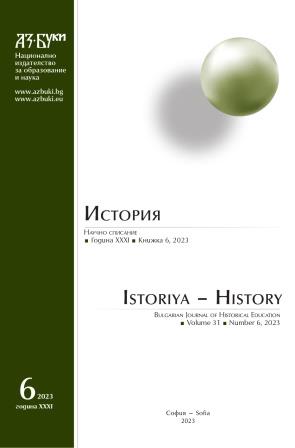
The study presents the problem of the essence, organisation, and functional development of the card file and archive of the State Security, in the period September 9, 1944 – 1949. The transformations of the services, departments, and sections that are directly involved in the operational report, card file, and archive are tracked. The main administrative and internal normative documents are analysed, which refer to the card file and archive of the State Security and which objectify the existing problems and trends at that time. The importance of this specific archival complex in its capacity as a carrier of retrospective documentary information and a specific source base for the researcher is derived.
More...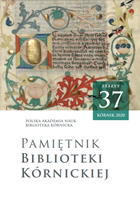
There are two Qur’an manuscripts in the collection of the Kórnik Library (Poland) – BK 1716 and BK 2676. Th e fi rst one, dating from the 17th century, is rich in diff erent types of scribal errors and serves as an interesting example of ways of amending them. Th e second one, dating from the 15th century, includes interesting illuminations and calligraphy. Th is paper is a detailed analysis of these manuscripts, including their covers, decorations and scribal errors.
More...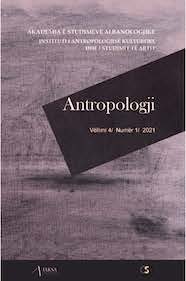
The webinar cycle Materializing-Modernity: Landscape, Architecture and Anthropology Intersections in 20th Century Rurality1 was organized and implemented from April 12, 2021, to May 6, 2021. It has been realized and implemented within the framework of the EU-funded project Materializing Modernity – Socialist and Post-socialist Rural Legacy in Contemporary Albania (MaMo), by Federica Pompejano (MSCA-IF Researcher, Academy of Albanian Studies), the Institute of Cultural Anthropology and Art Studies (IAKSA), the Department of Cultural Heritage and Environment and the Laboratory of Ethnomusicology and Visual Anthropology (LEAV) of the University of Milan (UNIMI), Milan, Italy. The MaMo Webinar Cycle was part of a project that received funding from the European Union's Horizon 2020 research and innovation programme under the Marie Skłodowska-Curie grant agreement No. 896925. The following pages contain the programme of the MaMo Webinar Cycle and the abstracts (in English and Albanian languages) of each oral presentation in order to give a more complete and a better understanding of the topics covered during the implementation of the webinar.
More...
: The scientific communication presents the results of a study of the collection of pistols and revolvers from the National Museum of History of Moldova, numbering about forty specimens of firearms of historical, technical and artistic significance. We propose to pay attention to the historical value of these weapons, presenting their description and evolution from pistols with the wheel lock mechanism to the flint lock and cap lock mechanism or percussion lock system. The article is a continuation of a series of publications on firearms from the previous issues of Tiragetia journal. The Western and Eastern samples of weapons examined here entered the museum collection as a result of donations and purchases, or were transferred from other institutions. The chronological framework of the collection covers the period from the Middle Ages (16th century) to the outbreak of World War II. Designers-gunsmiths are indicated separately or by country, some terminological aspects are specified regarding the etymology of the words “pistol” and “revolver”. The scientifically systematized material presented in the article can be useful for specialists, historians and museologists, and at the same time will be interesting and informative for a wide range of readers.
More...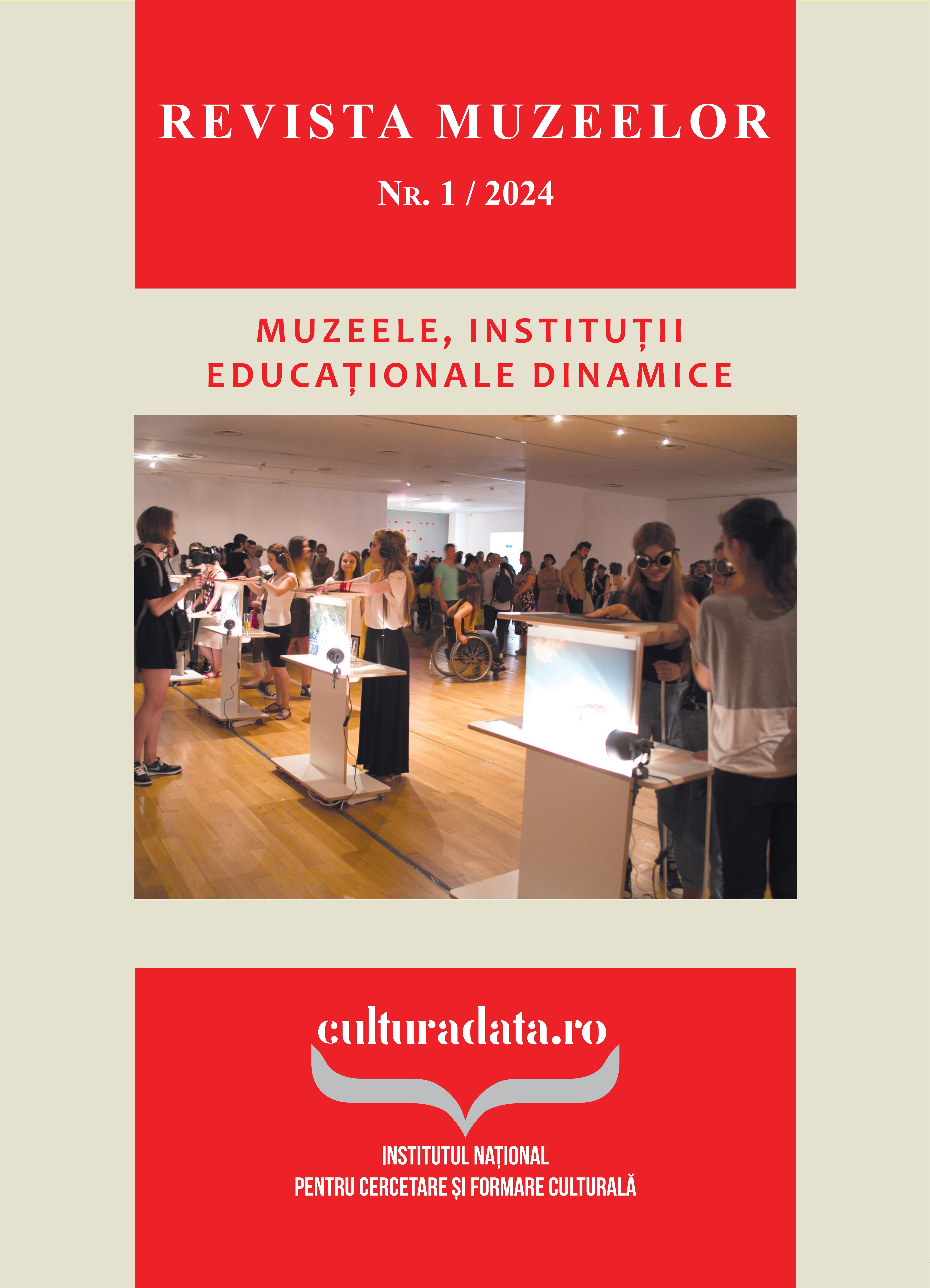
In the museum setting, various forms of data – written, visual, material, or digital – are pivotal for the preservation and display of cultural heritage. This research focuses on interpreting data as intangible elements within the museum environment, enveloping the exhibited or archived tangible objects. By referencing Arjun Appadurai’s concept of “thing” and its application to “data”, the study investigates how this data influences our perception and engagement with museum artifacts. Through a specific case study centered on an ethnographical photo collection, the research underscores the dynamic relationship between tangible objects and the intangible data that contextualizes and enhances our encounters with cultural heritage in museums.
More...
The aim of this article is to point out certain moments in the history of exhibiting the decorative art objects in Bucharest, following the cultural twinning of this space that received both European decorative art and oriental decorative art, as well as the way to develop an authentic decorative art, starting from local tradition. Moreover, the definition of the concept of “decorative” is also discussed, which has varied and still varies today in meaning. The article traces the emergence and metamorphosis of this type of art during the existence of museums in the Bucharest cultural-space and brings shades regarding the junction between museum and education space.
More...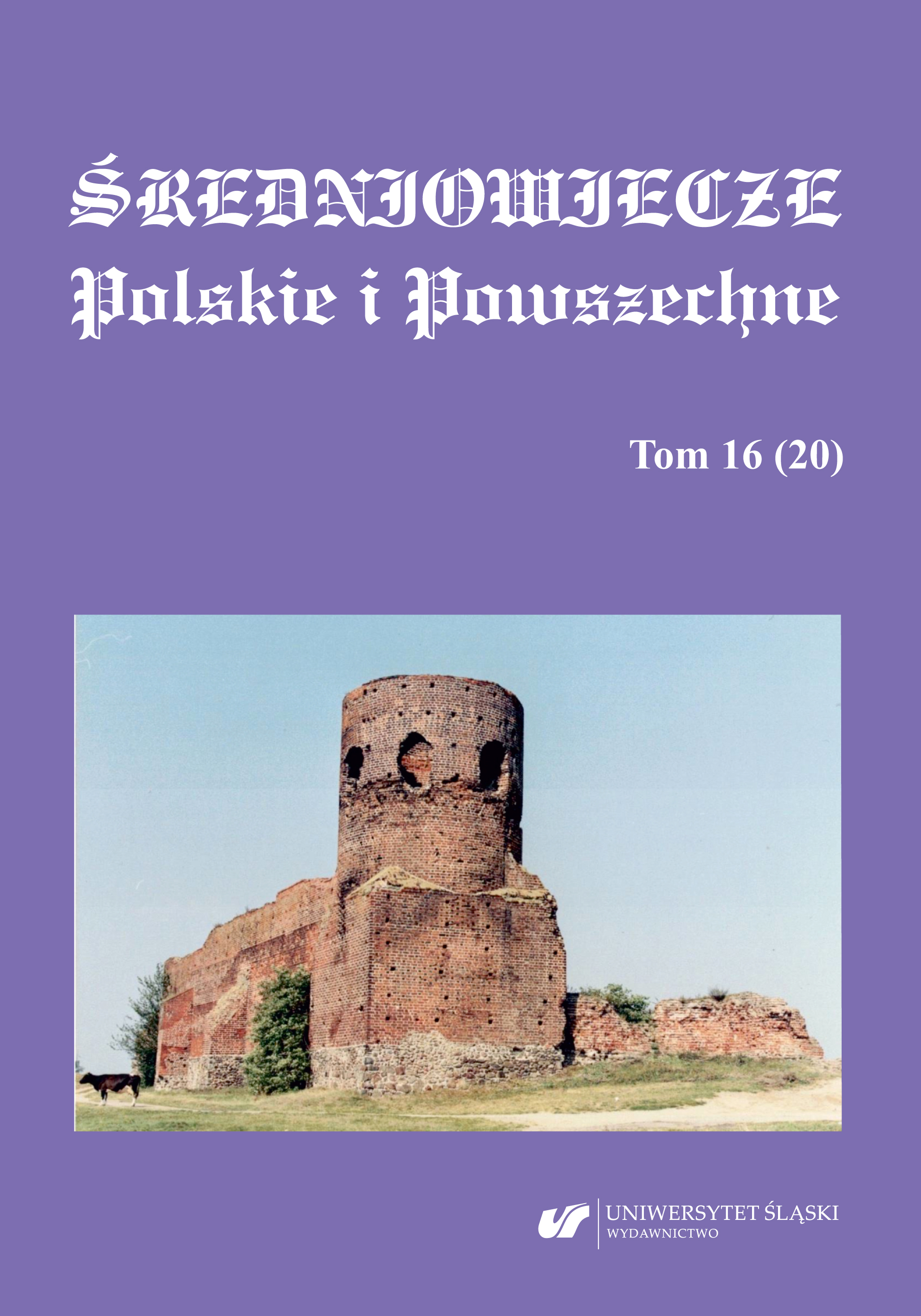
The article analyzes the functioning of a document as an object (artefact) in medieval Europe, against the broad background of changes in the paradigm of research on medieval writing culture, which assumes a multitude of forms of contact with writing, including its perception as a system of signs that could be viewed rather than “read” in the modern sense.The physical aspects of the document, including its writing material, text layout on the page, graphic symbols and objects attached to the document, constitute an issue that goes beyond the boundaries of traditional diplomatics. It encourages researchers to engage in a more intensive dialogue with experts in other auxiliary sciences, primarily with experts in epigraphy, because a large number of documents were produced on hard material, and also in sphragistics, due to the close interaction between the document and the seal in the process of communicating by sight and touch. The article discusses the occasional presence of a document in public space – as an element of the rituals of power, shown at the request of its issuer or recipient, or as an object of viewing in the practice of examining its authenticity – as well as its permanent presence in the form of a text “exposed” in a stone or as a fresco (charta lapidaria). In all situations in question, the specialized or very general knowledge of viewers determined whether and to what an extent they were able to “read” the information encoded in the format and material of the document, in graphic signs, illuminations, and seals.
More...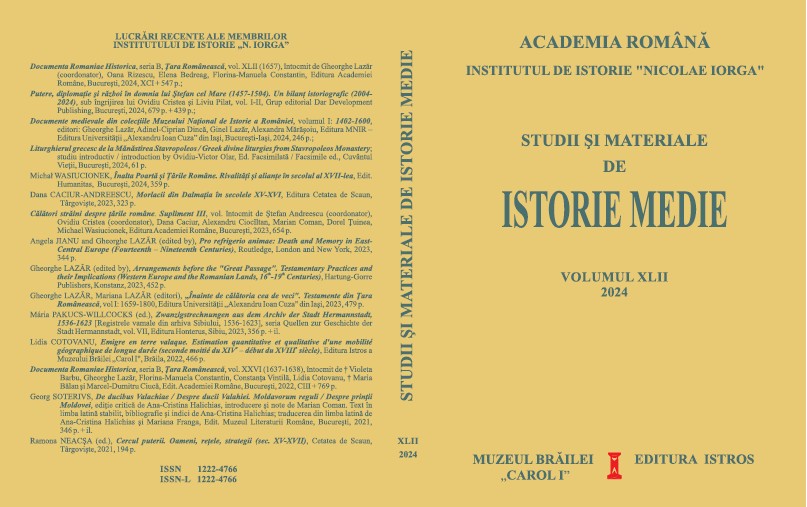
In the collections of the Museum of the Municipality of Bucharest there are 52 documents from the first reign of the first ruler of Wallachia coming from the Suțu family, issued from July 6, 1783 until around March 26, 1786. Soon afterwards, although he was on good terms with the Sublime Porte, Mihai Suțu was replaced by Nicolae Petru Mavrogheni (1786-1790), son of Petru Mavrogheni, consul of Austria in Mykonos.Of the 52 documents, 36 are originals, written on paper, accompanied by later, 19th century, Romanian or modern copies. The other documents were preserved in different manuscripts, such as “The comprehensive cartulary of all old and new estates of Agești and Dărmănești ...”, “Cartulary of special royal deeds and books that were made in the treasuries of your great treasurer Ianache Văcărescu ...” and “Cartulary of records regarding the Sinești estates, ..., houses, places and shops in Bucharest and Târgoviște, mills, gypsies owned by the family of doctor Constantin Darvari, between the years 1699-1841”.Among these documents, are noteworthy the orders given by the ruler of Wallachia to the great boyars to investigate the border disputes between different owners. One document refers to the lord's son, Grigore (Grigorașco, Grigorie) beizadea, married to Sevastia Dudescu, “one of the noble daughters of the land”, who was exempted from paying some taxes. The contribution to the improvement of the city's water supply system, for the “use, satisfaction and adornment of the police and all the public”, was rewarded by the ruler by granting “two measures of water” to Scarlat Greceanu great chancellor.The catalogue also comprises documents issued by the great boyars, following complaints related to various issues, lists of various assets, as well as a document sanctioned “with a fearful curse and terrible expletive” by archbishop Grigorie II, the Metropolitan of Wallachia.
More...